Opening a safe deposit box without a key can be a challenging task that requires careful consideration of the legal and procedural steps involved. Whether the key has been lost, stolen, or simply misplaced, accessing the contents of a safe deposit box usually entails working closely with the financial institution where the safe deposit box is held.
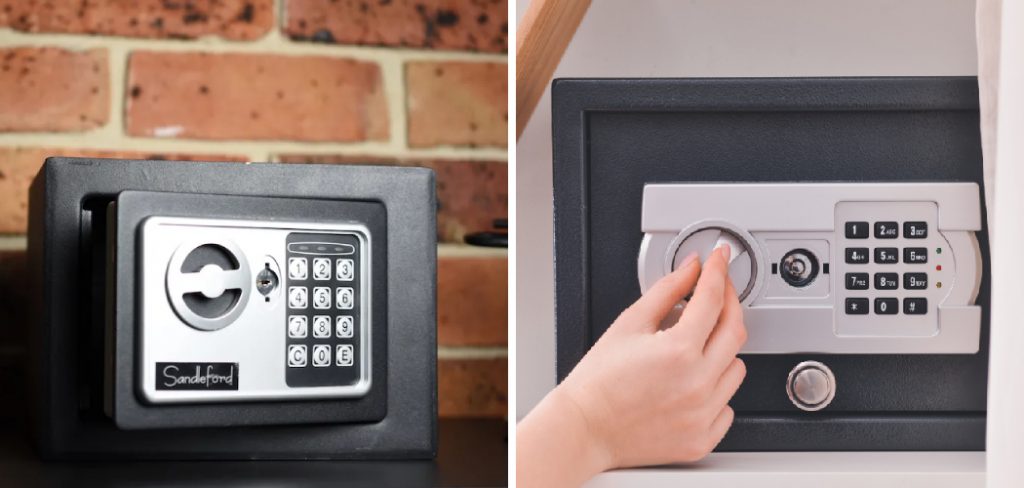
This guide on how to open a safe deposit box without a key will walk you through the necessary steps to regain access to your safe deposit box, ensuring that you follow proper protocol and avoid potential legal complications.
Why Open a Safe Deposit Box?
Before delving into the process of opening a safe deposit box without a key, it’s important to understand why you might need to access your safe deposit box in the first place. Safe deposit boxes are popular for storing valuable items such as jewelry, important documents, and cash. They offer an added layer of protection against theft or damage compared to keeping these items at home. Additionally, safe deposit boxes are typically insured by the bank or credit union where they are held, providing extra peace of mind.
However, there may come a time when you need to access your safe deposit box without a key. This could be due to losing your key, forgetting your key’s location, or inheriting a safe deposit box without the accompanying key. In any case, it’s important to know what steps to take in order to gain entry into your safe deposit box.
Needed Materials
To open a safe deposit box without a key, you’ll need several materials and documents to facilitate the process. Here’s a list of what you may need:
Identification:
A government-issued ID such as a driver’s license, passport, or state ID card to verify your identity.
Proof of Ownership or Authorization:
Documents such as the lease agreement for the safe deposit box or a power of attorney if the box is owned by someone else.
Key Replacement Form:
Some banks and credit unions may require you to fill out a key replacement form before granting access to the safe deposit box. This form typically includes information such as your name, contact information, and reason for needing access without a key.
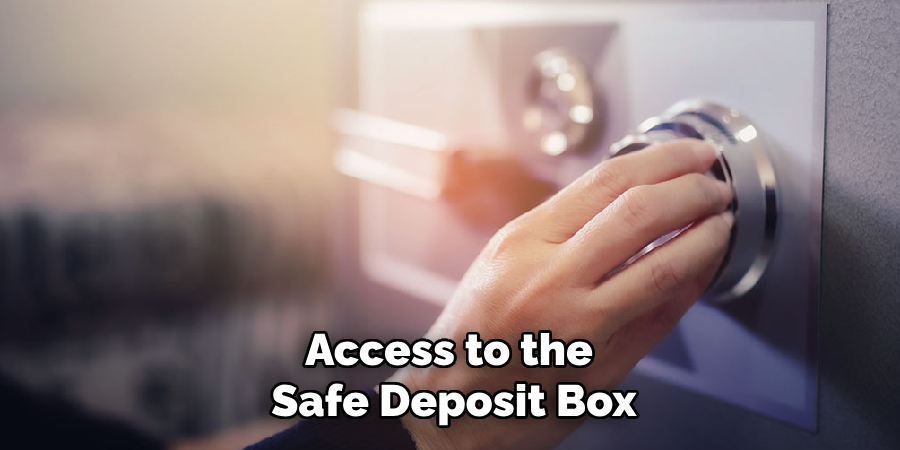
8 Step-by-step Guidelines on How to Open a Safe Deposit Box Without a Key
Step 1: Contact the Bank or Credit Union
The first step in opening a safe deposit box without a key is to contact the financial institution where the box is held. This could be a bank, credit union, or other financial institution. Explain your situation and request information on their specific process for accessing a safe deposit box without a key.
You may need to make an appointment or provide certain documents before being granted access to the safe deposit box.
Step 2: Provide Identification and Proof of Ownership/Authorization
Once you have scheduled an appointment or are given instructions on how to proceed, bring your government-issued ID and any other necessary documents such as a lease agreement or power of attorney with you. These will be used to verify your identity and ownership/authorization for accessing the safe deposit box.
It’s important to note that not all financial institutions have the same requirements for accessing a safe deposit box without a key. Some may only require identification, while others may need additional documentation.
Step 3: Fill Out Key Replacement Form (if required)
If the financial institution requires a key replacement form, you’ll need to complete this paperwork accurately. The form generally requests personal information such as your name, contact details, and reasons for needing access to the safe deposit box without a key. Be sure to have any supporting documents or information ready, as these will help expedite the process.
After filling out the form, submit it to the appropriate department or representative at the bank or credit union. It’s worth noting that the processing time for key replacement forms can vary, so make sure to inquire about how long it will take and if any additional steps are necessary.
Step 4: Pay Fees (if applicable)
In some cases, financial institutions may charge a fee to open a safe deposit box without a key. These fees can vary depending on the institution and the complexity of gaining access to the box. Before proceeding, inquire about any fees associated with the process. Generally, the fees cover the cost of services like drilling the lock or replacing the key.
Ensure you have the necessary funds available to cover any charges and be prepared to pay at the time of service. Keeping a record of the payment and any receipts provided can help you track the expense and might be necessary for your records.
Step 5: Provide a Signature
At this point, you may be required to sign documents such as a release form or an indemnity agreement. The purpose of these forms is to absolve the financial institution from any responsibility if anything goes wrong during the process of opening the safe deposit box without a key.
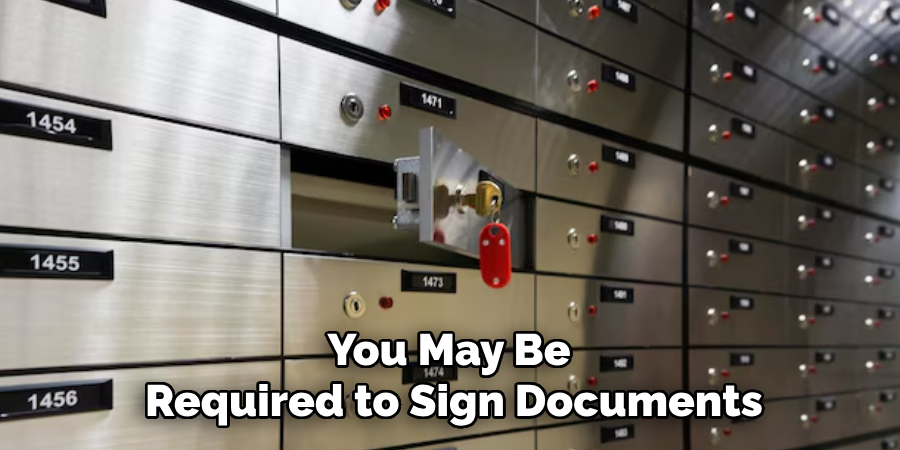
Read through all documents carefully and ask for clarification on any terms or conditions that you don’t understand before signing. Once signed, keep copies of all paperwork for your records.
Step 6: Accompany Bank Personnel to Safe Deposit Box Room
After completing the necessary paperwork and settling any fees, a bank representative will escort you to the safe deposit box room. This step is crucial as the bank personnel are responsible for maintaining security and protocol during the access procedure.
Once inside, the bank official will verify your identity once more and guide you through the final steps to access your safe deposit box. The process may involve drilling the lock or using special tools to open the box without a key. It’s important to follow all instructions provided by the bank personnel and ensure that the proper procedures are being followed to maintain the integrity and security of your belongings.
Step 7: Retrieve Your Belongings
Once the safe deposit box is successfully opened, you will be given access to retrieve your belongings. Carefully remove the items from the box and ensure that you have everything you need. It is advisable to take an inventory of the contents, noting any valuable items, documents, or other important belongings. If you find any discrepancies or missing items, notify the bank personnel immediately.
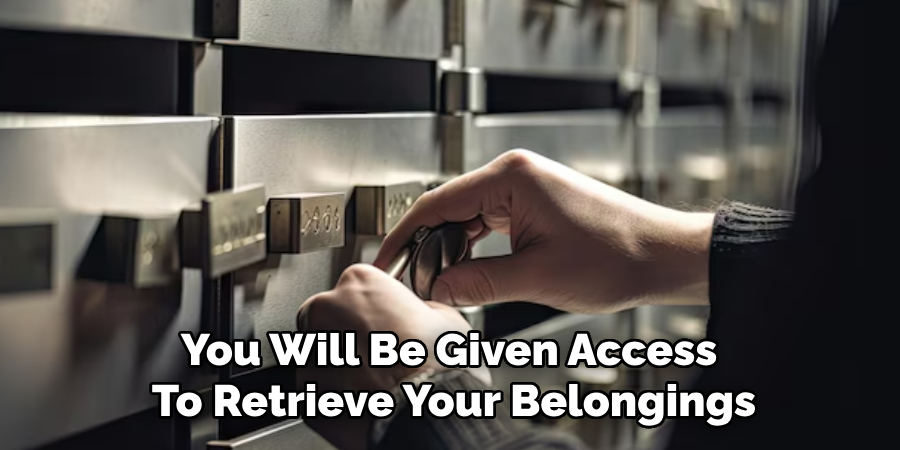
Consider taking photographs or making a written list of the contents for your records. This can be helpful for future reference or in case you need to create an insurance inventory. If there are items you wish to keep in the safe deposit box, you may either store them back into the box or consider them for safekeeping somewhere more accessible if you anticipate needing them again soon.
Step 8: Close and Lock the Safe Deposit Box
After you have finished retrieving your belongings, ensure that the safe deposit box is closed and locked securely. Return any tools or equipment provided by the bank personnel and thank them for their assistance. It may also be helpful to make a note of when you accessed the box without a key in case it is needed for future reference.
Following these steps on how to open a safe deposit box without a key carefully will ensure a smooth and secure process for opening a safe deposit box without a key. Remember to always keep your identification, proof of ownership/authorization, and any necessary funds readily available to expedite the process as much as possible. If you anticipate needing access to the box in the near future, consider getting an extra key made or storing the original key in a secure location to prevent future lockouts.
Safety Considerations
Ensuring the safety of your belongings and maintaining the integrity of the safe deposit box access process is paramount. Here are some key safety considerations to keep in mind:
Verify Authenticity:
Always ensure that the personnel assisting you are legitimate employees of the financial institution. Request identification and cross-check if necessary.
Maintain Confidentiality:
Be discreet about the nature of the items stored in the safe deposit box. Avoid discussing specific details with anyone who does not need to know.
Secure Documentation:
Keep all related documents, including identification, authorization forms, and receipts, in a secure place. This can help prevent misuse and provide a paper trail if disputes arise.
Supervise the Process:
Be present during every step of the box-opening procedure. Observe the handling of your box and its contents to ensure nothing is misplaced or tampered with.
Immediate Reporting:
If you notice any irregularities or discrepancies during the process, report them to the bank management immediately. Timely reporting can help in resolving potential issues swiftly.
Post-Access Review:
After retrieving or storing items, review the condition of your belongings and ensure nothing is missing or damaged. Taking an inventory or photographs can help keep accurate records.
By adhering to these safety considerations, you can protect your valuable items and ensure that the process of accessing your safe deposit box is carried out securely and efficiently.
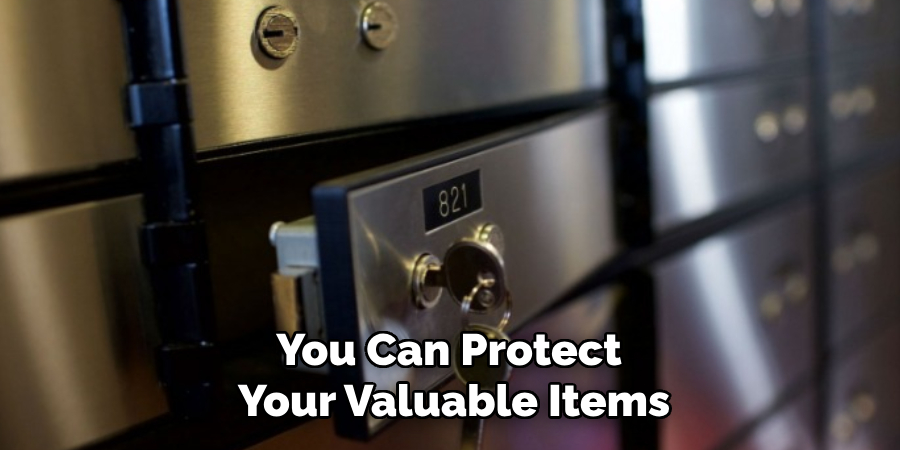
Frequently Asked Questions
Q: Can Anyone Access My Safe Deposit Box Without a Key?
A: No, only authorized individuals with proper identification and documentation can access a safe deposit box without a key. This is to protect the privacy and security of your belongings.
Q: How Long Does It Take to Open a Safe Deposit Box Without a Key?
A: The process can vary depending on the financial institution and any additional steps or paperwork required, but it typically takes anywhere from a few hours to a few days. Be sure to inquire about the estimated processing time before beginning the process.
Q: Will I Be Notified if Someone Tries to Access My Safe Deposit Box Without My Consent?
A: Yes, most financial institutions have protocols in place to notify you if someone attempts to access your safe deposit box without proper authorization. This is another layer of security to protect your privacy and belongings.
Q: What Happens if I Lose My Safe Deposit Box Key?
A: If you lose your safe deposit box key, it is important to notify the financial institution as soon as possible. They will guide you through the process of obtaining a new key or opening the box without a key if necessary. It is also recommended that an extra key be made or the original key stored in a secure location to prevent future lockouts.
Conclusion
Accessing a safe deposit box without a key can be a complex and time-consuming process, but by following the outlined steps on how to open a safe deposit box without a key, you can ensure that it is handled efficiently and securely. From scheduling appointments and gathering necessary documentation to working with bank personnel and paying any applicable fees, each stage is crucial for safeguarding your valuable items.
Always remember the importance of keeping your identification and proof of ownership on hand, and consider preventative measures to avoid future access issues. By being well-prepared and understanding the requirements of your financial institution, you can successfully navigate the process and maintain the security of your safe deposit box.
About
Safety Fic is a distinguished figure in the world of Diy design, with a decade of expertise creating innovative and sustainable Diy solutions. His professional focus lies in merging traditional craftsmanship with modern manufacturing techniques, fostering designs that are both practical and environmentally conscious. As the author of diy, Safety Fic delves into the art and science of Safety Fic-making, inspiring artisans and industry professionals alike.
Education RMIT University
(Melbourne, Australia) Associate Degree in Design (Safety Fic) Focus on sustainable design, industry-driven projects, and practical craftsmanship. Gained hands-on experience with traditional and digital manufacturing tools, such as CAD and CNC software.
Nottingham Trent University
(United Kingdom) Bachelor’s in diyfastly.com and Product Design (Honors) Specialized in product design with a focus on blending creativity with production techniques. Participated in industry projects, working with companies like John Lewis and Vitsoe to gain real-world insights.
Publications and Impact
In diy, Safety Fic his insights on indoor design processes, materials, and strategies for efficient production. His writing bridges the gap between artisan knowledge and modern industry needs, making it a must-read for both budding designers and seasoned professionals.
